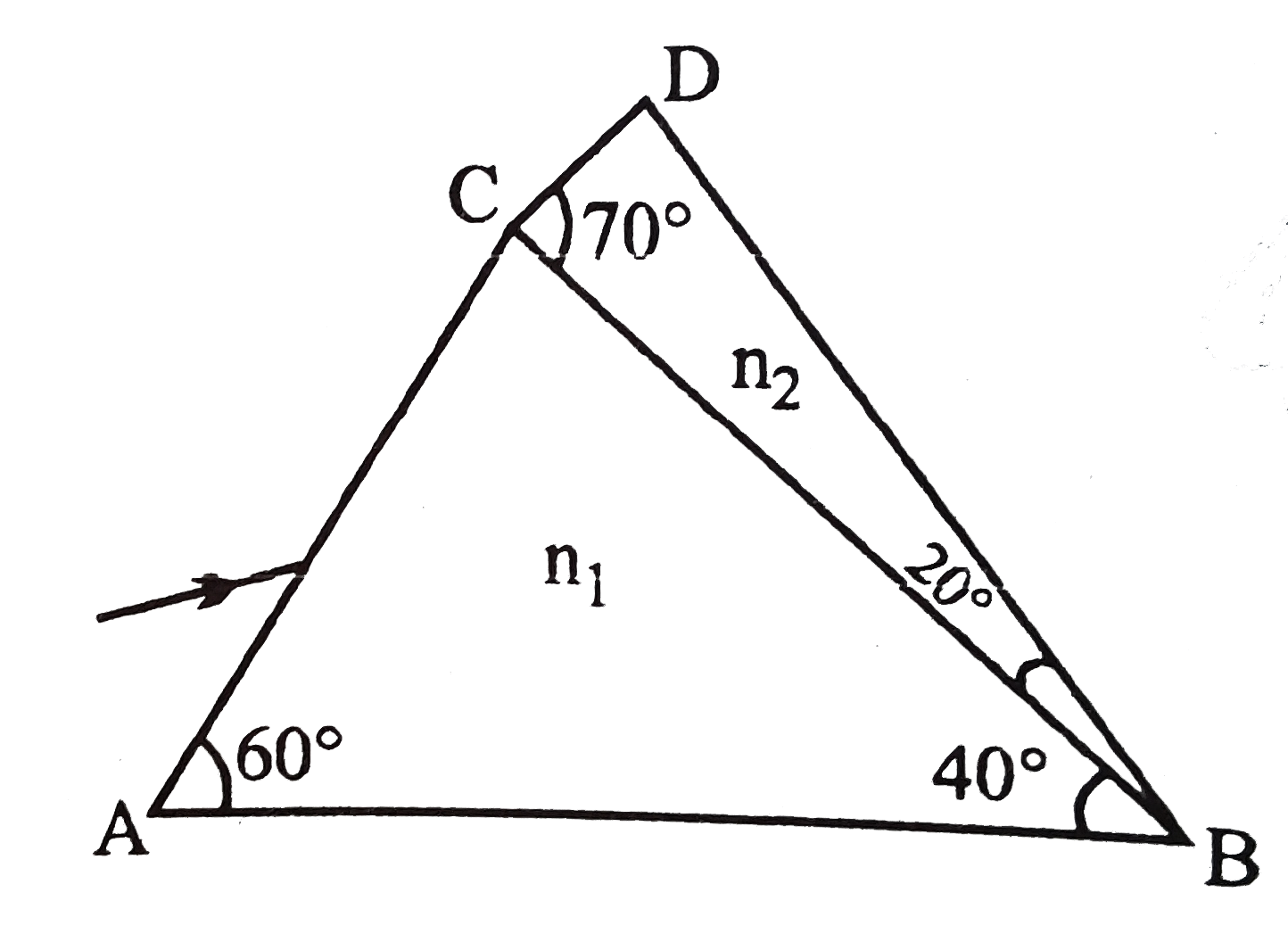A projectile is fired vertically upwards from the surface of the earth with a velocity Kve, where ve is the escape velocity and K<1.If R is the radius of the earth, the maximum height to which it will rise measured from the centre of the earth will be (neglect air resistance)Solution in Gujrati
R1−K2
RK2
1−K2R
K2R
The correct Answer is:A
Step by step video & image solution for A projectile is fired vertically upwards from the surface of the earth with a velocity Kv_(e), where v_(e) is the escape velocity and Klt1.If R is the radius of the earth, the maximum height to which it will rise measured from the centre of the earth will be (neglect air resistance) by Physics experts to help you in doubts & scoring excellent marks in Class 12 exams.
Updated on:21/07/2023Topper's Solved these Questions
- GRAVITATIONBOOK - ALLEN CHAPTER - GRAVITATIONEXERCISE - EXERCISE 4
9 Videos
- GRAVITATIONBOOK - ALLEN CHAPTER - GRAVITATIONEXERCISE - EXERCISE 2
26 Videos
- GEOMETRICAL OPTICSBOOK - ALLEN CHAPTER - GEOMETRICAL OPTICSEXERCISE - subjective
14 Videos
- KINEMATICS-2DBOOK - ALLEN CHAPTER - KINEMATICS-2DEXERCISE - Exercise (O-2)
47 Videos
Similar Questions
Assertion : The difference in the value of acceleration due to gravity at pole and equator is proportional to square of angular velocity of earth.
Reason : the value of acceleration due to gravity is minimum at the equator and maximum at the pole.
View SolutionTwo satellites of earth S1 and S2 are moving in the same orbit. The mass of S1 is four times the mass of S2. Which one of the following statements is true?
View SolutionA prism of refractive index n1 & another prism of reactive index n2 are stuck together without a gap as shown in the figure.The angle of the prisms are as shown. n1&n2depend onλ,the wavelength of light according to n1=1.20+10.8×104λ2&n2=1.45+1.80×104λ2 where λ is in nm.

(i)Calculate the wavelength λ0for which rays incident at any angle on the interfaceBCpass through without bending at that interface.
(ii) for light of wavelength λ0,find the angle of incidencei on faceACsuch that the deviation produced by the combination of prism is minimum.
View SolutionA particle is moving in xy-plane .At certain instant the components of its velocity and acceleration are as follows ux=3m/s,uy=4m/s,ax=2m/s2anday=1m/s2. The rate of change of speed at this moment is
View SolutionA projectile is fired from the surface of earth of radius R with a velocity k upsilon_(e) (where upsilon_(e) is the escape velocity from surface of earth and k lt 1) . Neglecting air resistance, the maximum height of rise from centre of earth is
View SolutionA particle is fired vertically from the surface of the earth with a velocity kυe, where υe is the escape velocity and k<1. Neglecting air resistance and assuming earth's radius as Re. Calculated the height to which it will rise from the surface of the earth.
View SolutionA projectile is projectile with velocity kv_(e) in vertically upward direction from the ground into the space ( v_(e) is escape velocity and klt1 ). If air resistance is considered to be negligible then the maximum height from the centre of earth to which it can go, will be : ( R =raduis of earth)
View SolutionA particles is fired vertically from the surface of the earth with a velocity Kve , where ue is the escape velcocity ans K<1. Neglecting air resistance , calcualte the heightto which it will rise from the surface of the earth .(R= radius of the earth ).
View SolutionA ball of mass m is fired vertically upwards from the surface of the earth with velocity nve, where ve is the escape velocity and n<1. Neglecting air resistance, to what height will the ball rise? (Take radius of the earth=R):-
View SolutionA ball of mass m is fired vertically upwards from the surface of the earth with velocity nve, where ve is the escape velocity and n < 1. Neglecting air resistance, to what height will the ball rise ? (Take radius of the earth as R) :-
View SolutionA projectile is fired from the surface of earth of radius R with a velocity ηve where ve is the escape velocity and η<1. Neglecting air resistance, the orbital velocity of projectile is -
View SolutionA projectile is fired from earth vertically with a velocity Kve where ve= escape velocity and K is a constant less than unity. What is the maximum height to which it rises as measured from centre of earth?
View SolutionA projectile is fired vertically upward from the surface of earth with a velocity Kυe where υe is the escape velocity and K < 1. Neglecting air resistance, show that the maximum height to which it will rise measured from the centre of earth is R1−K2 where R is the radius of the earth.
View SolutionA projectile is fired vertically upwards from the surface of earth with a velocity Kυe where υe is the escape velocity and K<1 Neglecting air resistance , show that the maximum height to which it will rise measured from the centre of earth is R/(1−K2) where R is the radius of the earth .
View SolutionA projectile is fired vertically upward from the surface of earth with a velocity K v_(e) where v_(e) is the escape velocity and K lt 1 . Neglecting air resistance, show that the maximum height to which it will rise measured from te centre of earth is R//(1-K^(2)) where R is the radius of the earth.
View SolutionA projectile is fired vertically upward from the surface of earth with a velocity K v_(e) where v_(e) is the escape velocity and K lt 1 . Neglecting air resistance, show that the maximum height to which it will rise measured from te centre of earth is R//(1-K^(2)) where R is the radius of the earth.
View Solution
